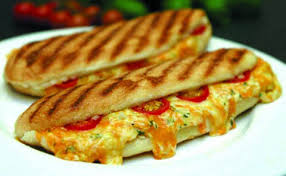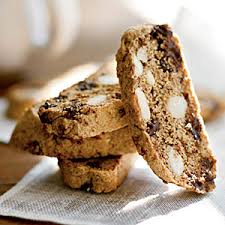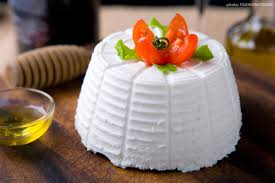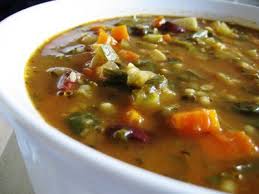There are a few simple vocabulary and pronunciation issues that I'd like to clear up once and for all because they drive me crazy. Some of these things are going to be hard for people to accept, but I just have to get them off my chest. I don't expect to change the world (or America) with these corrections, but at least I'll know I've said my piece.
 1. Gelato means ice cream. Not Italian ice cream. Just ice cream. Specifying that you are going out for “gelato” is just weird. When Italians visit the US they call the ice cream there gelato. Get it? For them it's the SAME THING. Of course the ice cream in Italy and the ice cream in the US (or anywhere else for that matter) are slightly different. Every country has developed its own style and its own variation for preparing it. But notice that while Italian bread is quite different from American bread, we don't call it “pane”. We call it Italian bread. Why should ice cream be any different?
1. Gelato means ice cream. Not Italian ice cream. Just ice cream. Specifying that you are going out for “gelato” is just weird. When Italians visit the US they call the ice cream there gelato. Get it? For them it's the SAME THING. Of course the ice cream in Italy and the ice cream in the US (or anywhere else for that matter) are slightly different. Every country has developed its own style and its own variation for preparing it. But notice that while Italian bread is quite different from American bread, we don't call it “pane”. We call it Italian bread. Why should ice cream be any different?
 2. Do not add an “s” to an Italian noun ending with the letter “i”. Ex: cannolis, raviolis, gnocchis, etc. Those words are already plural without the “s”. It's like saying appless or orangeses. It doesn't work. Now if you really aren't comfortable with pluralizing a word sans “s” then at least say cannolos, raviolos, or gnoccos (the "h" gets dropped). It's still weird but at least it's technically grammatically correct. Additionally, if you are talking about only one of said item (most specifically in the case of cannoli) then the “i” becomes an “o”. It is metaphysically impossible to order one cannoli.
2. Do not add an “s” to an Italian noun ending with the letter “i”. Ex: cannolis, raviolis, gnocchis, etc. Those words are already plural without the “s”. It's like saying appless or orangeses. It doesn't work. Now if you really aren't comfortable with pluralizing a word sans “s” then at least say cannolos, raviolos, or gnoccos (the "h" gets dropped). It's still weird but at least it's technically grammatically correct. Additionally, if you are talking about only one of said item (most specifically in the case of cannoli) then the “i” becomes an “o”. It is metaphysically impossible to order one cannoli.
 3. Panini means sandwiches. Here we have a combination of problems 1 and 2. First of all, panini is already plural. One of them is a “panino”. So, like I said, if you really must use an “s” then please call them “paninos” and if ordering just one please say “panino”. Second of all, an Italian sandwich is still a sandwich: stuff between two pieces of bread. Why Americans think that panini are made with a special type of bread and must be toasted is a mystery to me. (As a matter of fact, 99% of panini are NOT toasted. A toasted sandwhich is simply called "toast".) It's true that in Italy panini are usually made on a roll of some kind and not from sliced bread, but that's not enough to classify them as a different type of food. Especially since there's nothing saying that a panino can't be made using slices of bread. Be careful though. If you're in Italy and see what looks like a generic triangular American sandwich (white bread with something or other in the middle and the crusts trimmed off) that is called a tramezzino. Interesting, no?
3. Panini means sandwiches. Here we have a combination of problems 1 and 2. First of all, panini is already plural. One of them is a “panino”. So, like I said, if you really must use an “s” then please call them “paninos” and if ordering just one please say “panino”. Second of all, an Italian sandwich is still a sandwich: stuff between two pieces of bread. Why Americans think that panini are made with a special type of bread and must be toasted is a mystery to me. (As a matter of fact, 99% of panini are NOT toasted. A toasted sandwhich is simply called "toast".) It's true that in Italy panini are usually made on a roll of some kind and not from sliced bread, but that's not enough to classify them as a different type of food. Especially since there's nothing saying that a panino can't be made using slices of bread. Be careful though. If you're in Italy and see what looks like a generic triangular American sandwich (white bread with something or other in the middle and the crusts trimmed off) that is called a tramezzino. Interesting, no?
 4. (Okay, just one more of this kind. I promise.) Biscotti means cookies. Again, already plural. And again, just cookies. ALL types of cookies. But NOT that somewhat crescent shaped baked sweet that may or may not have hazelnuts mixed in and that may or may not be half dipped in chocolate. In Italy those are not a kind of cookie/biscotto. Those are called tozzetti. It's okay if you want to continue calling them biscotti, but just know that in that case you can call chocolate chip cookies and oatmeal cookies and shortbread cookies, etc. biscotti as well.
4. (Okay, just one more of this kind. I promise.) Biscotti means cookies. Again, already plural. And again, just cookies. ALL types of cookies. But NOT that somewhat crescent shaped baked sweet that may or may not have hazelnuts mixed in and that may or may not be half dipped in chocolate. In Italy those are not a kind of cookie/biscotto. Those are called tozzetti. It's okay if you want to continue calling them biscotti, but just know that in that case you can call chocolate chip cookies and oatmeal cookies and shortbread cookies, etc. biscotti as well.
 5. Some Italian words that have made it over to the US have, for some reason, kept their regional accent. This is most noticeable in the word “ricotta”. If one looks at that word and pronounces it as written but with an American accent, one will say “ri-COT-uh”. And that is actually much closer to the actual pronunciation than what most people end up saying when they believe they are making an effort to say it Italiany. These people say “ri-GUT”. Now I'm sure that somewhere in Italy there is some dialect that turns “c” to “g” and drops the final vowel, but just know that that IS NOT proper Italian pronunciation and that if you go to a restaurant in Italy and say that word you will get weird looks.
5. Some Italian words that have made it over to the US have, for some reason, kept their regional accent. This is most noticeable in the word “ricotta”. If one looks at that word and pronounces it as written but with an American accent, one will say “ri-COT-uh”. And that is actually much closer to the actual pronunciation than what most people end up saying when they believe they are making an effort to say it Italiany. These people say “ri-GUT”. Now I'm sure that somewhere in Italy there is some dialect that turns “c” to “g” and drops the final vowel, but just know that that IS NOT proper Italian pronunciation and that if you go to a restaurant in Italy and say that word you will get weird looks.
**Please note, more or less the same rule applies to "prosciutto". It is pronounced "pro-SHOOT-oh", not "pro-JUTE".
 6. Minestrone, mascarpone, calzone... The final “e” is not silent. Nothing, seriously nothing, sounds more American than turning the “o” in that last syllable into a diphthong. Now, to be honest, even if you make the effort to vocalize the final “e” (with the "eh" sound) but say the rest of the word with your normal accent, it still doesn't sound good. So I have no idea how to help you. Sorry. Maybe just avoid ordering those things.
6. Minestrone, mascarpone, calzone... The final “e” is not silent. Nothing, seriously nothing, sounds more American than turning the “o” in that last syllable into a diphthong. Now, to be honest, even if you make the effort to vocalize the final “e” (with the "eh" sound) but say the rest of the word with your normal accent, it still doesn't sound good. So I have no idea how to help you. Sorry. Maybe just avoid ordering those things.
7. MozzarellAAAAAAAAAAAAAA. Not mozzarell. Perhaps I should have said this sooner, but the only words used in Italian that don't end in a vowel are words that come from other languages. So if, when you've just finished saying something in Italian, you find that your mouth is closed because it did not just finish pronouncing a vowel, then you've done something wrong.
**Please note, more or less the same rule applies to "prosciutto". It is pronounced "pro-SHOOT-oh", not "pro-JUTE".
7. MozzarellAAAAAAAAAAAAAA. Not mozzarell. Perhaps I should have said this sooner, but the only words used in Italian that don't end in a vowel are words that come from other languages. So if, when you've just finished saying something in Italian, you find that your mouth is closed because it did not just finish pronouncing a vowel, then you've done something wrong.
**And the helpful tip of the day: If you want an espresso with milk/a cappuccino with no foam (known as a “latte” in the US), you must order a caffè latte. Otherwise you will just get a glass of milk. Additionally, an “espresso” in Italy is just “caffè”. So you don't have to specify and it's actually a little strange if you do.
In closing, no one expects you to pronounce Italian words without a trace of an accent. I was surprised to learn that, in the same way that an Italian accent is charming in English, so too can an American accent be charming in Italian. (I know. I don't get it either.) But there is a difference between pronunciation and blatant grammatical error. Let's all try to keep that in mind and spread the word. It's true that we won't all feel comfortable correcting friends and strangers who order paninis and who like biscottis with their latte, but remember that in correcting these mistakes you are actually helping these people. And more importantly you are helping me.
*If you are the copyright holder of any of the photos used in this post please contact me if you wish for them to be removed.
*If you are the copyright holder of any of the photos used in this post please contact me if you wish for them to be removed.
Ha! That is so funny! I ordered a latte on my first trip to Italy and got a glass of milk when I wanted coffee. But, it was the best glass of milk I have ever had.
ReplyDeleteI have to totally disagree on gelato though. The italian version of ice cream is so different than the american one that it seems like a different thing altogether, and then using the italian word is helpful. I often want gelato...nocciole...yum...but just can't find the right stuff here. I don't even think anyone makes hazelnut ice cream. And, sadly, the "gelato" here just doesn't taste the same as it does in italy. Maybe I'm missing your point. I just really want some nocciole gelato.
Ok - wait. I think there is hazelnut ice cream over here. I can't remember. What I'm trying to say is that ice cream in italy is more delicious than it is here and I think I should go to italy occasionally to see you and eat gelato.
ReplyDeletehaha....at least I was correct on a few of these. I do pronounce ricotta and prosciutto correctly . Did not know there was such a thing as a cannolo. Did not know we don't need the "s" Love the Italian lesson! Cary
ReplyDelete